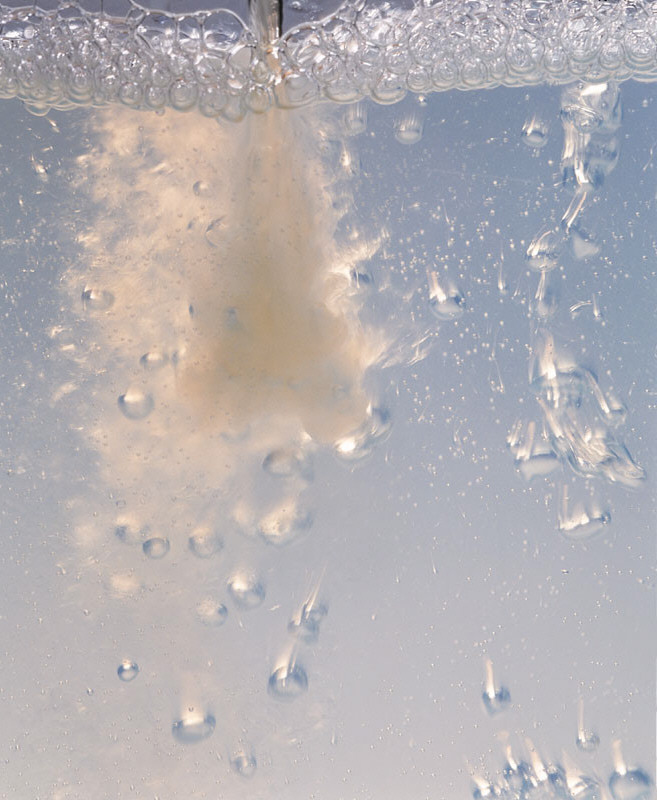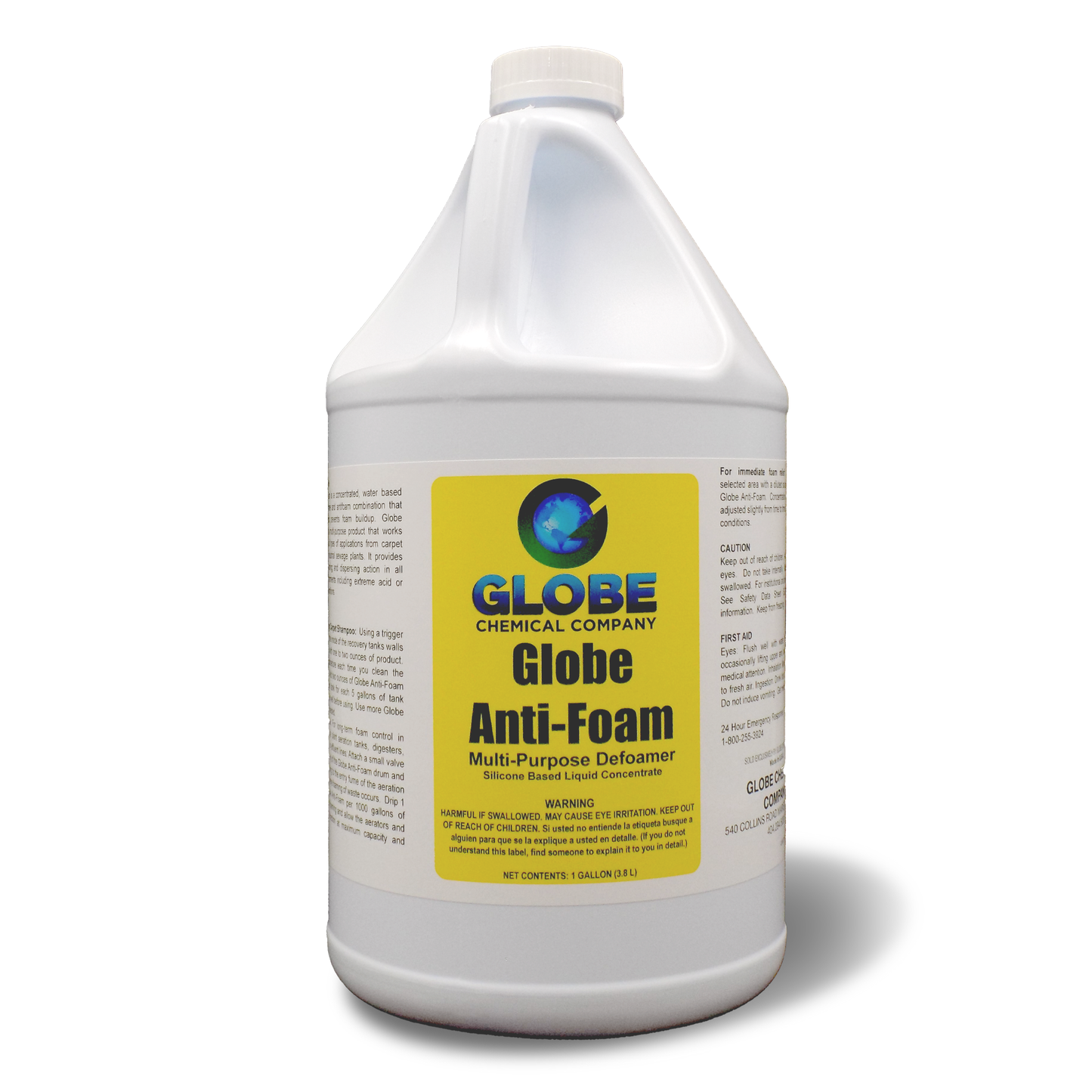Checking Out Different Kinds Of Anti-Foam Control Solutions for Different Industries
The monitoring of foam in industrial processes is a critical element that can affect both item top quality and operational performance across different fields. Various markets, such as food and beverage, pharmaceuticals, and wastewater treatment, face distinct difficulties connected to foam development, demanding customized anti-foam services. From silicone-based representatives to eco friendly alternatives, the option of suitable control measures varies considerably. Recognizing these differences is vital for enhancing procedures and making sure conformity with industry standards. What effects do these varying services have for functional practices and ecological considerations?
Understanding Foam Development
Foam formation is a complex physical phenomenon that takes place when gas is trapped within a fluid, producing a stable structure of bubbles. This process is influenced by numerous elements, including the properties of the fluid, the nature of the gas, and external conditions such as temperature and stress (Anti-Foam Control Solutions). The security of foam is mostly determined by the surface area stress of the viscosity and the fluid, as these buildings dictate exactly how easily bubbles can create and continue
In several industrial applications, foam is an unwanted byproduct that can hinder procedures, lower performance, and impact item high quality. The formation of foam is typically exacerbated by agitation, mixing, or chemical responses, resulting in enhanced functional difficulties. Understanding the systems behind foam development is important for establishing reliable control approaches.

Sorts Of Anti-Foam Professionals
Various kinds of anti-foam agents are made use of throughout markets to deal with the obstacles presented by foam formation. These representatives can be generally classified right into two major types: non-silicone-based and silicone-based anti-foam representatives.
Silicone-based anti-foam representatives are highly effective as a result of their special residential properties. They include polydimethylsiloxane (PDMS) and can dramatically reduce surface tension, permitting quick foam collapse. Their security at heats and in various pH environments makes them suitable for varied applications, including production and chemical processing.
On the various other hand, non-silicone-based anti-foam representatives include organic substances such as fatty acids, esters, and waxes. These agents typically work as eco-friendly alternatives to silicone-based products. They commonly function by supplying a physical barrier that interferes with foam development. Non-silicone agents are commonly utilized in applications where silicone contamination is a concern, such as in certain pharmaceutical processes.
Furthermore, some anti-foam agents integrate both silicone and non-silicone components to enhance efficiency throughout particular problems. Recognizing the distinct features and applications of these anti-foam representatives is essential for choosing the ideal remedy for foam control challenges in different commercial settings.
Applications in Food and Drink
In the food and drink market, reliable foam control is vital to making sure item high quality and procedure performance. Excessive foam can lead to functional obstacles, such as equipment Resources overflows, decreased processing capacity, and disparities in product texture. Different applications within this industry, consisting of brewing, milk handling, and juice production, demand tailored anti-foam solutions to deal with details frothing concerns.
For instance, in brewing, foam security is vital for both the quality of the beer and the performance of the developing process. Anti-foam agents are employed to decrease undesirable foam during fermentation and packaging, making sure a smoother workflow and preserving desired tastes. In milk processing, the manufacturing of products like yogurt and cheese requires cautious foam monitoring to avoid spillage and maintain appearance.
In juice manufacturing, foam can obstruct purification procedures, impacting yield and clarity. Right here, the application of suitable anti-foaming representatives can optimize production prices and boost item look - Anti-Foam Control Solutions. In general, selecting the ideal anti-foam control options tailored to the unique needs of each application is crucial for maintaining quality and performance in the food and beverage industry
Solutions for Pharmaceuticals
Reliable monitoring of foam generation is vital in the pharmaceutical sector, where accuracy and pureness are extremely important. Foam can disrupt numerous processes, consisting of blending, filtering, and sterilization, potentially jeopardizing item quality and efficiency. Consequently, the selection of appropriate anti-foam services is necessary to keep operational performance and regulatory conformity.
Silicone-based anti-foam agents are commonly utilized due to their effectiveness and compatibility with a series of pharmaceutical formulas. These agents function by reducing surface area stress, therefore destabilizing the foam framework. In addition, non-silicone options, such as natural oils and fats, are acquiring grip for their eco-friendliness and biodegradability, straightening with sector patterns toward sustainable practices.
It is vital to think about the certain application when choosing an anti-foam option, as the formulation has to not detrimentally impact the energetic ingredients or the end product. Moreover, compatibility with cleansing and sterilization processes is important to guarantee that the anti-foam agents do not present impurities. Constant monitoring and screening of foam control procedures can enhance performance, guaranteeing that pharmaceutical procedures stay optimum and certified with rigorous industry criteria.

Wastewater Treatment Strategies
As markets significantly concentrate on sustainability, applying effective wastewater treatment techniques has actually become crucial for alleviating environmental influences. Wastewater therapy is a vital procedure additional hints that ensures the risk-free disposal or reuse of commercial results, thus lessening air pollution and saving water sources.
One key approach consists of using organic therapy approaches, such as triggered sludge procedures, which make use of microbes to break down organic contaminants. This technique is usually matched by sophisticated filtration and sanitation techniques, guaranteeing the effluent satisfies regulative standards.
Furthermore, chemical treatment choices, such as coagulation and flocculation, are utilized to get rid of suspended solids and liquified compounds. The integration of anti-foam representatives is essential in this context, as foam can prevent therapy effectiveness and make complex phases of information and splitting up.
Additionally, membrane layer modern technologies, including reverse osmosis, are getting traction as a result of their capacity to produce premium effluent appropriate for reuse in various applications. Overall, a mix of these methods tailored to details market needs can significantly improve the performance of wastewater treatment, contributing to a more lasting future.
Conclusion
Reliable foam control is crucial throughout various sectors to enhance product high quality and process efficiency. The choice of suitable anti-foam agents, whether environmentally friendly or silicone-based non-silicone options, plays an essential duty in addressing particular lathering obstacles encountered in food web and drink handling, pharmaceuticals, and wastewater therapy - Anti-Foam Control Solutions. Proceeded exploration of diverse anti-foam solutions will certainly facilitate better operational end results while making sure ecological conformity and resource recovery, therefore contributing to lasting methods within these fields
Various markets, such as food and beverage, drugs, and wastewater treatment, face unique obstacles associated to foam formation, requiring customized anti-foam options. Various applications within this industry, including developing, milk handling, and juice production, demand tailored anti-foam solutions to resolve details frothing concerns.
Anti-foam representatives are utilized to minimize unwanted foam throughout fermentation and packaging, making certain a smoother operations and preserving wanted flavors. These agents function by decreasing surface tension, consequently destabilizing the foam structure. The selection of suitable anti-foam representatives, whether silicone-based or green non-silicone choices, plays a critical function in resolving specific foaming difficulties encountered in food and drink processing, pharmaceuticals, and wastewater therapy.